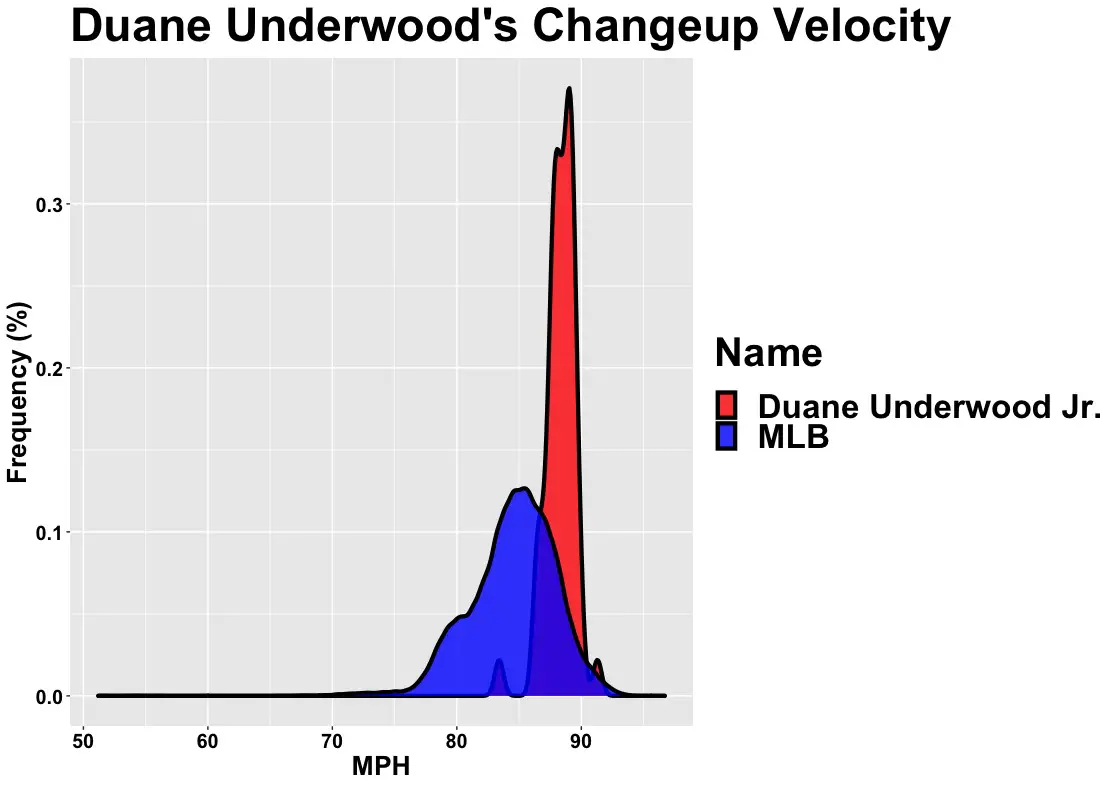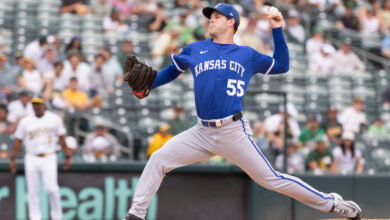
Duane Underwood Jr. Showcases Lethal Fastball, Changeup Combo Highlighted by Elite Vertical Break
My initial reaction when watching Duane Underwood Jr. work Wednesday night against the Twins was that the velocity readings were haywire. He threw a pitch that I thought was a changeup because of its sharp break, but the score bug said it was 96 mph. Then he threw what appeared to be the same dropping fastball again, but this time it registered as a 90 mph changeup.
Duane Underwood Jr. fastball (96 mph) and changeup (90 mph) pic.twitter.com/8bp17OW24R
— Brendan Miller (@brendan_cubs) July 23, 2020
This doesn’t make sense, I thought.
Underwood’s fastball and changeup combination is unique. According to Trackman, his changeup is thrown harder than 90% of the league, yet it still has more vertical break than (pfx-z) than 77% of MLB relievers. That’s interesting because we normally associate higher velo with less drop, or more rise if you prefer to think of it that way.


I wasn’t the only one who couldn’t discern Underwood’s changeup and fastball, as evidenced by the two swinging Twins strikeouts he got with the offspeed pitch. His fastball could be mistaken as a changeup and vice versa because both are thrown with above-average velocity and break.
Before Underwood was moved to the bullpen on a full-time basis last season at Iowa, he averaged around seven strikeouts per nine innings. His strikeouts jumped to well over 10 K/9 at Triple-A and carried over to his brief time in Chicago, where he struck out 13 batters over 11.2 innings (10.03 K/9).
There’s no denying Underwood’s uptick in strikeouts is due in part to increased fastball velocity out of the bullpen. But it’s not just a matter of throwing harder. Underwood altered his changeup last season, which resulted in more vertical break as compared to 2018.

The unique combination of velocity and vertical break tethering tethering Underwood’s fastball and changeup — plus the potential of a developing curveball — makes him stand out in a big way.

